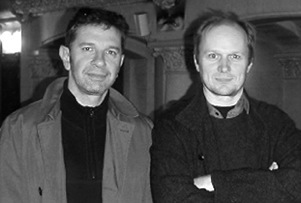Petal 007

Pablo Ortiz & Anssi Karttunen:
Al Compás del Corazón
Messsages in tangos
between Argentina and Finland
This programme started out as a study on how free a classical player could be and how much freedom a composer could in turn give the performer. To tempt Pablo Ortiz into writing for the cello I transcribed his Le dernier tango argentin (originally for viola) and 5 little milonguitas (originally for violin). Inspired by the tango tradition, Ortiz decided to write pieces for 1-3 cellos, which all study the question of freedom in different ways. Searching for extreme rubato he wrote the first pieces - bianco, monjeau and el jefe - for two cellos, to be recorded by one single player in studio. He then composed the two tangos finlandais and Manzi for solo cello. The pieces for three cellos - firpo, el tigre and ángeles caídos - are conceived to be played by cellists of three generations. Each should let their very personal style colour the performance. With Erkki Rautio (my teacher from 1976-78) and Timo-Veikko Valve (born 1982) - these three generations are here represented.
My own contribution to our study on rubato are the arrangements of some early Argentinean tango classics by Roberto Firpo, Julio de Caro, Carlos Gardel and Domingo S Federico and Kyyneleet by Georges de Godzinsky from Finland. All these composers have a clearly recognisable style that should come through in these versions, together with the strong personalities of the cellists. The players take turns playing the different parts and therefore no one is solely responsible for the melody or the accompaniment. The listeners will know who is playing the melody just by following the styles of the players. From the old tango musicians we tried to learn a freedom that our classical training has almost made us forget. There are many messages in these tangos; the Argentinean composing Finnish tangos, the Finn transcribing Argentinean tangos; and these messengers playing them for you on this CD.
Anssi Karttunen
